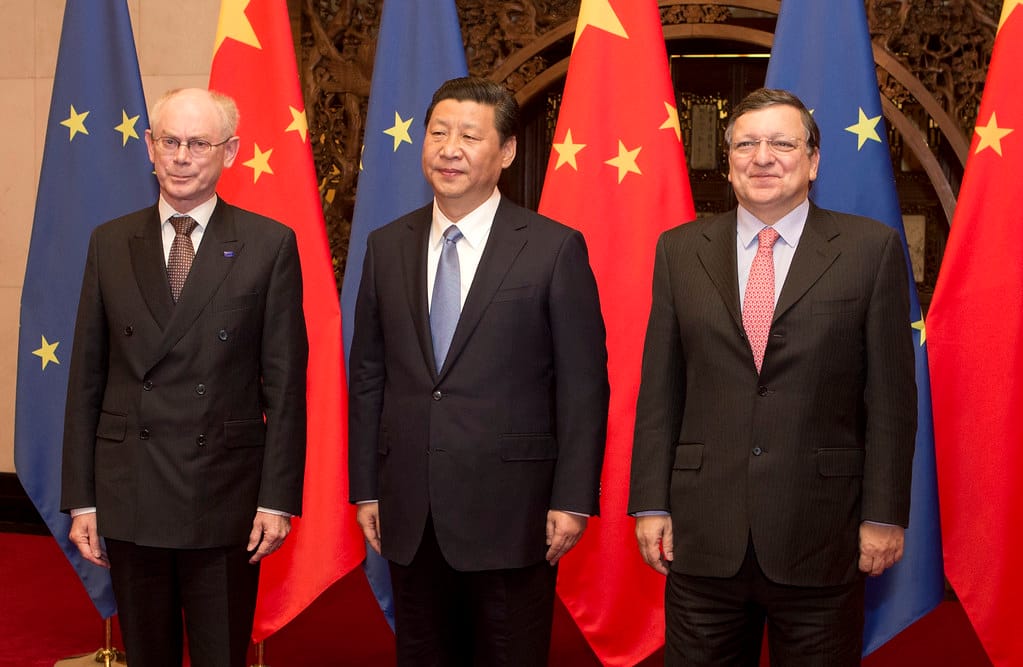China’s Rare Earth Magnet Controls: Why Manufacturers Can’t Count on a Quick Fix
China's rare earth export controls disrupt global supply chains and automotive output, exposing vulnerabilities in metals and technology sectors worldwide

Mercedes-Benz is scrambling to find ways to protect against shortages. European auto parts plants have suspended production lines. General Motors, Toyota and Volkswagen are warning their factories could shut down within weeks. The culprit isn’t a strike or faulty components – it’s the reality that critical rare earth magnets from China are now trapped in customs due to stepped-up tracking requirements that suggest Beijing’s export controls are here to stay.
The situation has escalated rapidly since China introduced a national tracking system for rare earth magnets last week, requiring producers to submit extra information online including trading volumes and client names. This follows export restrictions introduced on 4 April 2025, which required exporters to obtain licences for seven medium to heavy rare earth elements and several magnets. What started as licensing delays has now evolved into comprehensive end-to-end monitoring of the entire supply chain.
Why This Matters More Than Previous Trade Spats
We don’t run ads or share your data. If you value independent content and real privacy, support us by sharing.
China controls over 90% of global processing capacity for rare earth magnets – the permanent magnets essential for everything from windshield-wiper motors and anti-lock braking sensors to fighter jets and home appliances. When China restricts access, global automakers warn of production halts as reserves run out.
The immediate impact is already visible. Germany’s VDA auto industry lobbying group warned this week that rare earth shortages could disrupt or even halt German car production. In India, Bajaj Auto has cautioned that further delays could ‘seriously impact’ electric vehicle production. Adam Dunnett, secretary general of the European Chamber of Commerce in China, told Reuters that some firms could stop production ‘as soon as this week’.
China’s dominance in the supply chain is clear. Two decades ago, factories in Indiana that turned rare earth metals into magnets moved production to China – just as demand was starting to soar across industries. Now, with China accounting for over 60% of global mine production and almost all processing, the restriction of rare earth exports has become Beijing’s strongest trade leverage tool.
The Permanent Reality Check
There were hopes in the US and elsewhere that China’s export controls would be removed as part of a trade truce agreed in Geneva last month. Beijing’s unveiling of the comprehensive tracking system suggests otherwise. As Tim Zhang, founder of Singapore-based Edge Research, put it: ‘Our current hypothesis is that China would continue its export control mechanism on rare earths, as its an ace card for China to hold.’
Beijing’s long-term target is clear: track the whole rare earth production chain, strengthen control over the sector and crack down on smuggling, illegal mining and tax evasion. The new system isn’t just about trade leverage – it’s about permanent oversight of a strategic resource.
This represents a fundamental shift from previous trade disputes. In earlier cases where China imposed export curbs on metals, exports tended to slowly rebound as exporters applied for and received licences. The introduction of comprehensive tracking suggests this time is different, mirroring how US software controls are reshaping the global chip industry – another front in the accelerating technology competition.
Immediate Impact on Critical Industries
The automotive sector is feeling the pinch most acutely. European auto parts plants have suspended output while carmakers assess their exposure. The semiconductor industry faces similar challenges, with chip manufacturers warning of potential production delays.
Delivery times have lengthened significantly since April, with some companies reporting that suppliers are taking weeks longer to deliver inputs. The cascading effects extend beyond immediate production – companies are discovering gaps in their supply chain visibility that they never knew existed.
For business leaders, this raises uncomfortable questions: Do you know your exposure to Chinese rare earth suppliers? Can you trace your supply chain beyond your immediate vendors? Are you hoping for a return to business as usual that may never come?
The Search for Alternatives
Governments are scrambling to respond. Japan is proposing rare earth cooperation with the US in trade talks , whilst diplomatic sources reveal that officials from India, Japan and Europe are urgently seeking meetings with Beijing to push for faster licence approvals.
However, the alternatives remain limited. Companies like MP Materials are developing rare earth supply chains in Saudi Arabia and reviving US domestic production, but these efforts will take years to meaningfully reduce dependency on China.
This supply crisis has striking parallels to other critical materials. Just as global copper shortages threaten green energy goals, rare earth constraints could undermine the transition to electric vehicles and renewable power. The recent discovery of rare earth deposits in Central Asia offers some hope for diversification, but commercial-scale production remains years away.
The US-China trade conflict is turning into a battle over global supply chains , with lasting consequences for many industries. What began as tariff disputes has evolved into competition over critical technologies and resources, leaving Europe caught between American and Chinese tech giants.
What Companies Should Do Now
The harsh reality is that companies dependent on rare earth magnets need to plan for ongoing supply challenges, not a quick fix. Beijing’s tracking system demonstrates its intention to maintain end-to-end visibility and control over rare earth exports.
Business leaders should conduct immediate supply chain audits to understand their exposure. This means looking beyond first-tier suppliers to identify where rare earth components enter their supply chains. Companies should also assess their inventory levels and consider strategic stockpiling where feasible.
Most importantly, organisations need to abandon the assumption that this situation is temporary. China’s rare earth controls appear to be a permanent feature of the global economy. Companies that fail to adapt and diversify their sourcing may find themselves caught short when there’s no backup plan – and no timeline for when normal supply might resume.